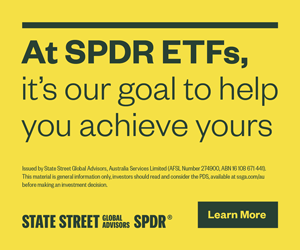Investing in the future, for you and your children
It is becoming regular practice for parents and grandparents to invest for their children and grandchildren.
Investing on a child’s behalf can provide the child with a financial head start that the parents or grandparents may not have received themselves.
Unfortunately, this can be complex.
Not only will you be faced with the question of how to invest the money, you will need to consider in whose name to invest.
Given the long-term nature of the investment, common investments on behalf of a child include:
Savings accounts
These accounts can be set up as a trust account in the name of a parent or grandparent but need to be transferred to the child when they turn 18.
Interest income must be declared by whoever controls the account, not whose name it is in or who it is held in trust for.
Where the parent is trustee of a bank account, the Australian Taxation Office (ATO) will contemplate where the money came from and whether the parent uses that money.
If clearly kept for the child, the ATO will allow it to be taxed in the child’s name.
The ATO has indicated that the larger the account balance, the more likely they will consider it the property of the parent.
A child who receives interest of $416 or more must lodge a tax return.
Insurance bonds
Insurance bonds are a simple investment with the flexibility to be used for tax-effective savings.
The bond is transferred automatically to the child at a pre-nominated age and capital gains tax (CGT) is not payable if held for at least 10 years.
The trustee has control over the bond until the child reaches the nominated age.
As these bonds are a tax-paid investment, there is no need to include bond earnings in personal tax returns while the money remains in the bond.
Bonds can be withdrawn with no personal income tax liability after a 10-year period but withdrawals before this time can attract such tax.
Shares and managed funds
Income is earned in the form of dividends, distributions and capital growth.
Given the long-term investment horizon, the capital growth can be significant.
People often choose to hold shares in their name on behalf of a child and transfer ownership when the child reaches 18.
CGT does not apply until the shares are eventually sold.
Most managed funds require an adult to provide their own tax file number (TFN) as they act as trustee of the investment on behalf of the child.
Dividends and capital gains/losses on the sale of shares must be declared by whoever rightfully owns and controls the shares, not whose name they are in.
A child who owns shares and earns more than $416 must lodge a tax return.
In each case, of course there are tax considerations.
Higher tax rates apply to income earned on a child’s savings and investments.
The government instituted this to prevent parents diverting their income to their child to avoid paying tax.
Children who earn more than $416 can be taxed at the highest marginal tax rate.
You do not have to set up a discretionary trust to hold the child’s shares, they can be held on bare trust.
That is, your name appears on the shares as trustee for the child as they are under a legal disability (i.e. a minor).
You will need to maintain documentation verifying you were holding the shares in trust.
A bare trust can be advantageous when compared to a discretionary trust when the child turns 18 and you wish to transfer the shares the child’s name.
There is no CGT payable as they were always effectively the child’s shares.
Alternatively, if in a discretionary trust, the transfer of investment assets can incur CGT.
If you insist on holding the shares in a discretionary trust, the trust will need a TFN and require an annual tax return.
Where the trust income is not distributed to a beneficiary, the trustee can be taxed at the highest marginal tax rate.
Let’s consider practical examples.
If a father uses $10,000 from his own bank account to buy shares in the name of his daughter.
He deposits the dividend of $500 into his own bank account and uses it for his own personal expenses.
The dad must declare the $500 income on his tax return.
When he sells the shares, he will also need to declare any capital gain/loss.
Another practical example could be when a grandmother draws a $20,000 lump sum from her super fund and uses that money to buy shares in the name of her newly born grandson.
She makes all the decisions about those shares.
All dividend income and any profit from the sale of those shares are deposited into a bank account in the grandson’s name with grandma as trustee.
The dividends and capital gains should be declared on the grandson’s tax return.
The general cost of living has sharply increased in Australia over the last few decades and we can assume that it will continue to climb.
Investing a small amount for the benefit of your child or grandchild can give them that extra opportunity to get ahead that you might not have received.
We all work incredibly hard to build wealth for the benefit of future generations – investing on behalf of a child is a step in the right direction.
The information provided is the opinion of the author. The AJN recommends that readers seek independent financial advice.
Get The AJN Newsletter by email and never miss our top stories Free Sign Up



comments